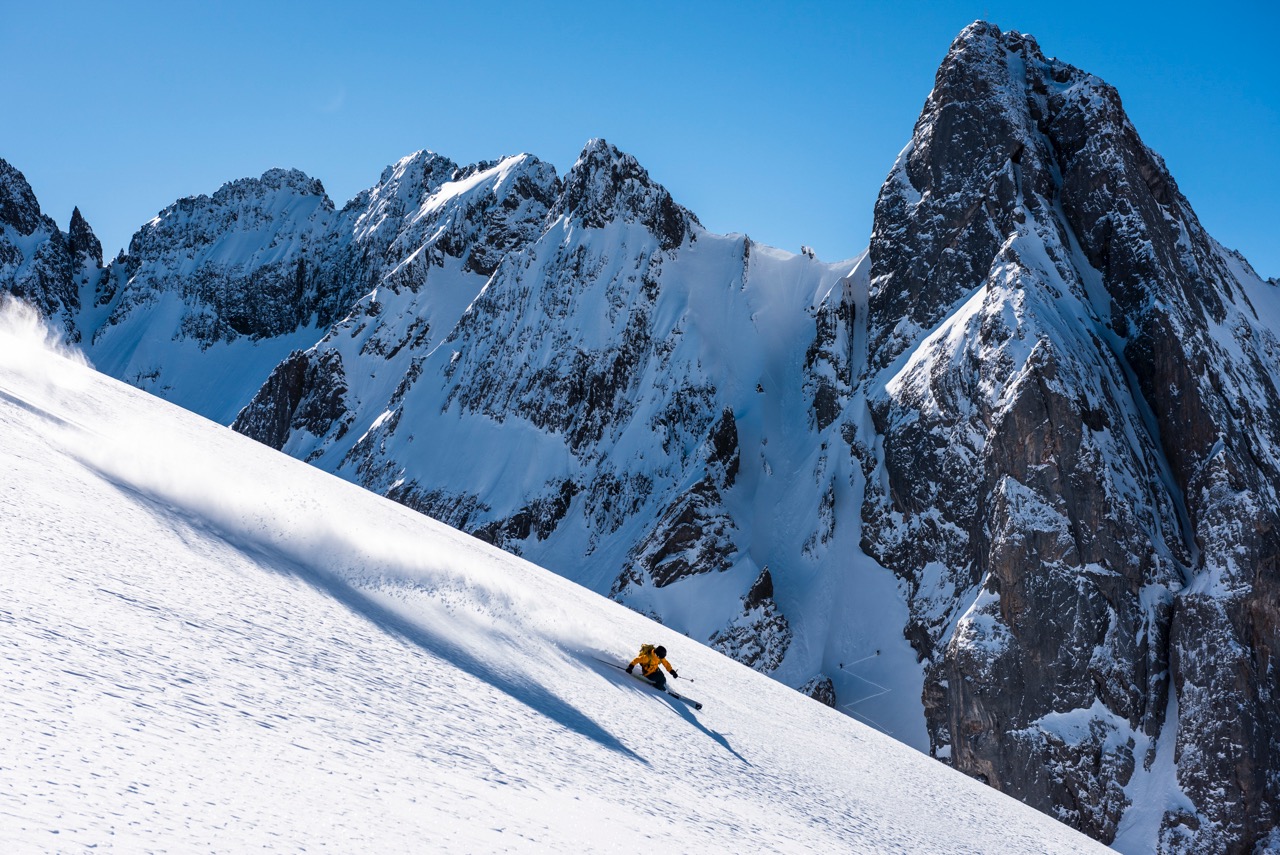This is why local knowledge is key to any alpine ski trip


Wherever you go skiing, local knowledge is the key to finding the best snow and the best lines on any trip – particularly on a road trip where you only have a short amount of time in each spot. Local shredders and guides know where the snow gets blown in any given wind, where gets tracked out and where you can find freshies days after a storm, which forests hide good storm-day lines, which lines tend to be dangerous and where windslab builds up, not to mention the safe routes around cliffs, crevasses and other alpine dangers.
That’s why when Stian Hagen, Austin Ross and Christina Lustenberger from Völkls BMT (big mountain touring) team hit the road to chase snow around the Alps, they hit up their team mates for beta along the way – from Chamonix in France to St Moritz in Switzerland and the Arlberg in Austria. As Christina says: “Local knowledge is like gold, any sort of local beta or info on snowpack can jump start your trip and send you in the right direction. Looking into Avalanche bulletins, weather forecasts, maps etc. is stuff you can always do before your trip, but if you have the chance to hook up with a local shredder you have hit it home!”
LOCALS – BMT Webisode 5
Local knowledge is the key to finding the best conditions and terrain on a road trip. Join the BMT team Austin Ross and Stian Hagen as they travel from Chamonix to visit fellow team mates, Lucas Swiekowski in his hometown of St Moritz, Switzerland and Nadine Wallner in Alberg, Austria.
There’s simply no substitute for growing up in an area and knowing it like the back of your hand. It can mean the difference between scoring a hidden untracked couloir rather than skiing scraped-off moguls all day, or sending pillows in the trees instead of getting lost in a whiteout.